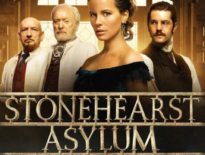There is no scarier night on which to set a horror movie than Halloween. John Carpenter’s Halloween revolutionized the entire genre, and Cinema Fearité has already discussed that particular date’s impact on movies like Trick or Treat, Trick or Treats, and Night of the Demons. No matter how many Halloween movies that one is able to see, it seems like there will always be more. In 1988, a straight-to-video low-budget job was made that has been silently gliding under the radar of many fans, the ingeniously titled Hack-O-Lantern.
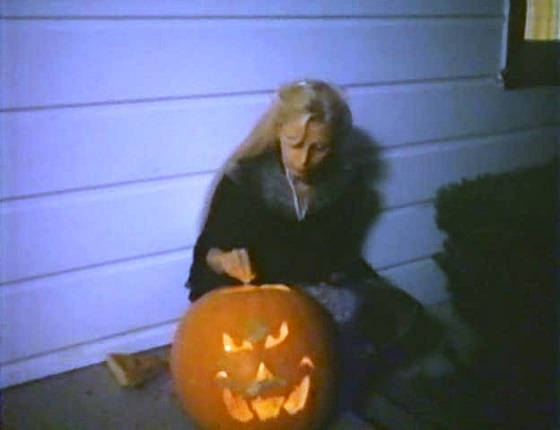
Hack-O-Lantern is the story of a young man named Tommy Drindle (Gregory Scott Cummins from Phantom of the Mall: Eric’s Revenge) who, ever since he was a little boy, has been targeted for “greater things” by his Grandpa (Blade Runner’s Hy Pyke). On Halloween, Grandpa invites Tommy to a ritual in which he will be expected to “prove himself to his creator.” Tommy’s mother (Katina Garner from Cannibal Hookers) is opposed to Tommy’s involvement with Grandpa’s satanic cult, but she gets no help in stopping him from his siblings; Tommy’s sister, Vera (Carla Baron from Sorority Babes in the Slimeball Bowl-O-Rama), is too concerned with the planning of the annual Halloween dance and his brother, Roger (Lady Avenger’s Jeff Brown), is the town cop who has his hands full with a group of grave robbers that has been pilfering the local cemetery. To make matters worse, the town seems to have attracted a serial killer, with bodies piling up left and right. Roger soon figures out that all of the strange incidents are related, and they all point to Tommy. Roger and Vera have to find a way to stop all of the wrongdoings, even if it means taking out their own brother.
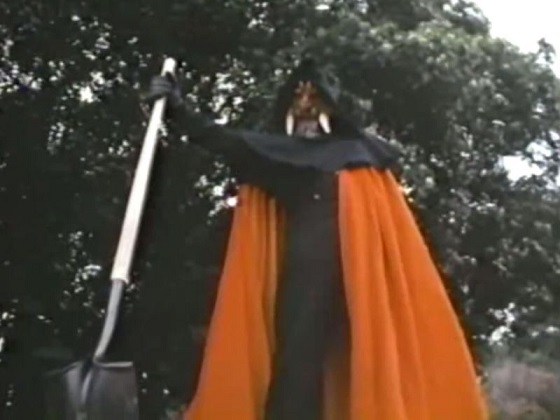
The plot of Hack-O-Lantern is a beautiful mess. Director Jag Mundhra (Open House) tries to make sense of the screenplay (the only produced work by Carla Robinson), and he succeeds for the most part. The film is a bit schizophrenic, weaving three different plots into one: the satanic cult, the grave robbers, and the serial killer. They all eventually come together, but not as neatly and satisfyingly as one would hope. The movie itself is uneven, as well; it’s full of bad acting, amateur stunt work, and mediocre effects that are all brought together by some creative cinematography and slick editing. So why even bother with it? It’s pure fun.
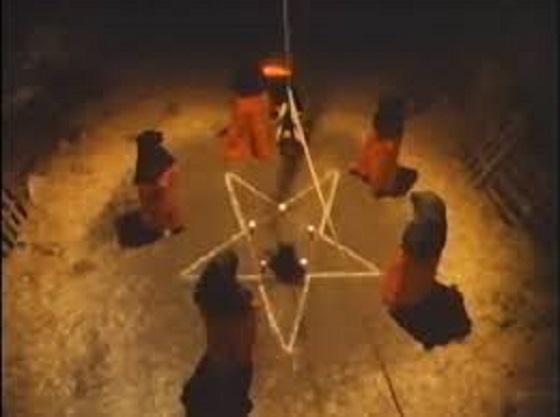
Although it came out at the tail end of the golden age of the slasher movie, Hack-O-Lantern still follows many of the standard tropes of the genre. The kills are all creative, if not particularly well-executed; a couple of standout deaths include a man who takes a shovel to the head and a woman who is strangled by her own corset. The film also features many archetypical scenes straight out of the horror textbook, including a chase through a graveyard and, of course, the inevitable satanic ritual. There’s even the gratuitous nude scene that comes standard with eighties slasher movies. Add in the clever twist ending that the film has, and Hack-O-Lantern displays a great slasher sensibility.
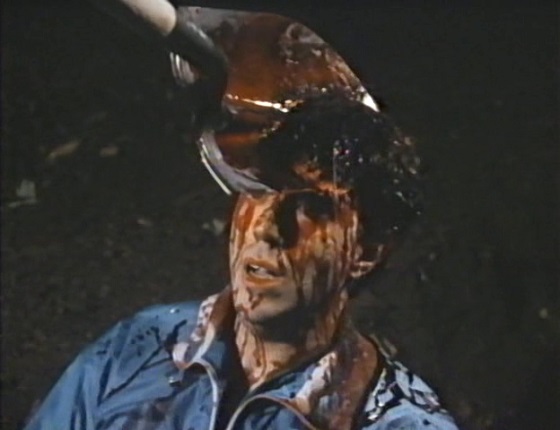
One of the strongest aspects of Hack-O-Lantern is its cinematography. Shot by Stephen Ashley Blake (Night Wars, Vice Academy), the movie has the look of a full blooded slasher movie, even if the plot is a bit of a hybrid. Blake pulls out all the stops, using cool camera angles and inventive lighting tricks to make everything look extra spooky. Other staples of slasher photography, like POV shots and the use of mirror reflections, are all packed up tight in there as well. Stephen Ashley Blake did his homework, and Hack-O-Lantern looks great because of it.
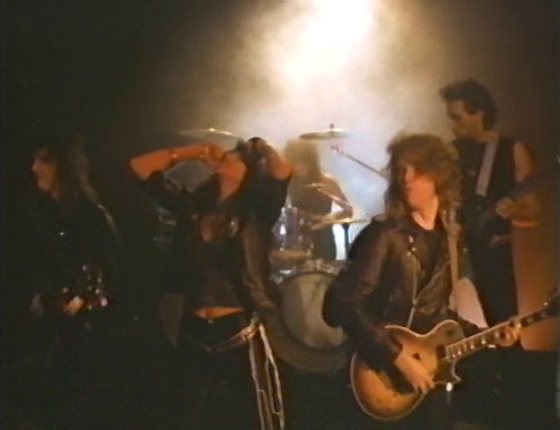
The soundtrack to Hack-O-Lantern is awesome. The score was written by Greg Haggard (who wrote the “Teenage Mutant Ninja Turtles” theme), and it is made up mostly of spooky organ riffs, thick synthesizer vamps, and sparse piano tinkling. The incidental music is economical, yet effective; the movie doesn’t need a big score, so Haggard doesn’t give it one. In addition to the background music, Hack-O-Lantern also features the music of a couple of hard rock bands. In an early scene, Tommy puts on his headphones and is transported into a music video for a song called “The Devil’s Son” by the heavy metal band D.C. Lacroix. The video foreshadows Tommy’s future, showing a mock sacrifice that culminates with a woman holding up a severed head (an image that, although not at all representative of the rest of the film, was used on the box art). At the Halloween dance, a few songs from another rock band called Mercenaries are played, giving the partygoers a rocking beat to which they can dance. Whether it’s the score or the diegetic music, the soundtrack to Hack-O-Lantern is a memorable part of the film.
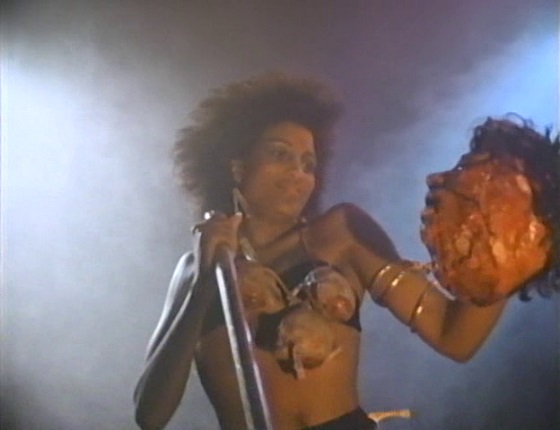
There are sections of Hack-O-Lantern that feel padded, scenes that seem to have been stuck in only so that the film could reach a ninety minute running time. In addition to the glorified music videos featuring D.C. Lacroix and Mercenaries, there is an uncomfortably extended scene with a stripper at the dance that goes nowhere. There’s another scene where a woman prances around for far too long with a snake. Most puzzlingly, there’s a stand-up comedy routine in the middle of the film, where one of the guests at the dance walks outside and begins telling jokes to a crowd of people who have gathered around him. It’s a completely extraneous segment, but it apparently serves its purpose; Hack-O-Lantern checks in at just under ninety minutes.
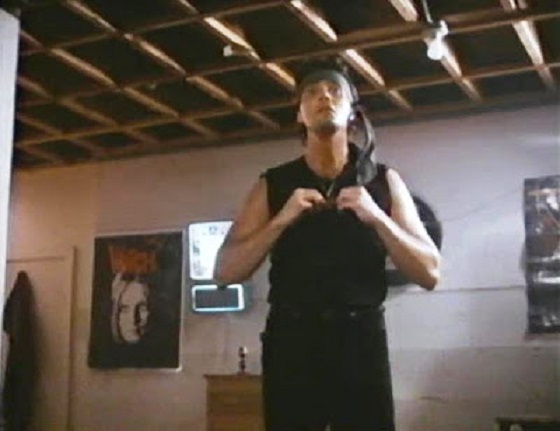
Hack-O-Lantern was also released under the names Death Mask, The Damning, and, most generically, Halloween Night. It’s a shame that all of the also-known-as names are there to cause confusion, because Hack-O-Lantern is obviously the coolest Halloween horror movie title of all time.
